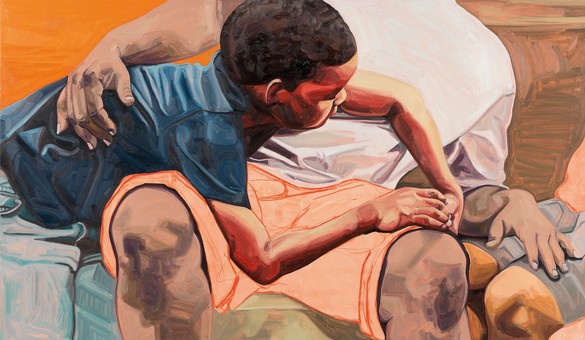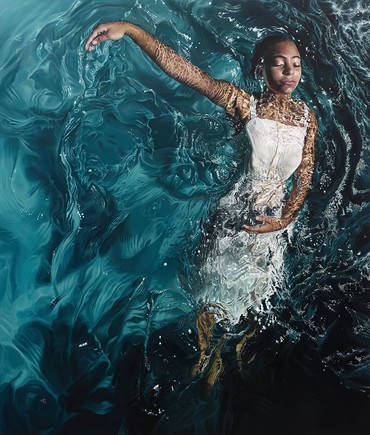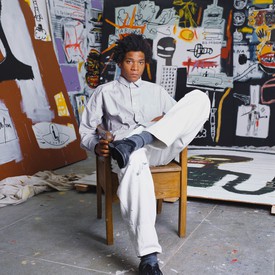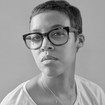
Jordan Casteel received her BA in studio art from Agnes Scott College, Decatur, and her MFA in painting and printmaking from the Yale School of Art, New Haven (2014). In 2020, Casteel presented a solo exhibition, Within Reach, at the New Museum, New York, accompanied by a fully illustrated catalogue. Other recent solo exhibitions include Jordan Casteel: Returning the Gaze, presented at the Denver Art Museum in 2019 and at the Iris & B. Gerald Cantor Center for Visual Arts at Stanford University in 2019–20. Casteel is the recipient of a MacArthur Foundation Fellowship (2021). She lives and works in New York.

Roxane Gay’s writing appears in The Best American Mystery Stories 2014, The Best American Short Stories 2012, Best Sex Writing 2012, A Public Space, McSweeney’s, Tin House, Oxford American, American Short Fiction, Virginia Quarterly Review, and many other publications. She is a contributing opinion writer for the New York Times. She is the author of the books Ayiti, An Untamed State, the New York Times–bestselling Bad Feminist, the nationally bestselling Difficult Women, and the New York Times–bestselling Hunger. She is also the author of World of Wakanda for Marvel. She has several books forthcoming and is at work on television and film projects. She also produces a newsletter, The Audacity, and a podcast, The Roxane Gay Agenda.
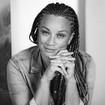
The paintings of Calida Rawles merge hyperrealism with poetic abstraction. Ranging from buoyant and ebullient to submerged and mysterious, her recent work uses water as a vital, organic, multifaceted material: Black bodies float in exquisitely rendered submarine landscapes of bubbles, ripples, refracted light, and expanses of blue. For Rawles, water signifies both physical and spiritual healing as well as historical trauma and racial exclusion. Photo: Glen Wilson, courtesy the artist and Lehmann Maupin
In an interview, the writer often points out that their subject is having a moment. They’ve achieved a career pinnacle worthy of celebration or critical attention, and that is the impetus for the conversation. But at this point in their careers, Jordan Casteel and Calida Rawles are enjoying much more than a moment. As visual artists they have exhibited their work in galleries and museums across the United States and abroad. They have enjoyed critical acclaim and professional opportunities that are nearly impossible to turn down. And now they are grappling with taking the time to appreciate the successes, making the time to create new work, and finding the time to nurture themselves and the people in their lives. The three of us spent an hour over Zoom, as is the way of the world for now, talking about the art they make, the vague dissatisfactions of ambition, and letting their work speak for itself.
—Roxane Gay
ROXANE GAYWhen did you first make art?
CALIDA RAWLESIn kindergarten, I drew this dinosaur and the teacher kept asking me, did I trace it? I said no. She tried to explain like I didn’t understand what tracing was. Then she took me out of the classroom and went and got another teacher and showed her my drawing and said, I think she has talent. I remember the feeling of getting pulled out of my class and the teachers talking about me in this way. It was like, I’m about to draw all the time.
RGDo you find yourself still chasing that feeling?
CROh, what a good question. I probably do get a little joy in feeling that people like what I do. They don’t have to, though. When I got to a space where that wasn’t the only goal, the work got better.
RGThat’s interesting.
CRThat’s probably the more risky work, when you’re more afraid of showing it because you know it satisfies you and you don’t know if people are going to like this but you’re going to put it out there anyway. That’s the purest place.
RGJordan, what about you?
JORDAN CASTEELI was a junior in college when I took my first oil painting class and fell in love with that specific material. Until that point, I was the crafty child. I loved baking and making things. It didn’t matter what I was making but I liked staying busy. I was always making mobiles! I had all these mobiles hanging in my room and I’d make them out of spoons and forks and things I would just find around the house. If my family provided a glue gun and pom-poms and twist ties and maybe watercolor or acrylic paint, I would turn nothing into something and I loved that. As long as I can remember, I’ve loved the idea that my way of seeing the world could be translated through objects that start as nothing and become something. It’s my safe place, my meditative place. I like being there. And like you, I think sharing it with the world is always a risky thing. And it usually is really exciting when you’re taking that risk.
RGHow do you deal with the risk? How do you find that courage to say, You know what, however people might feel about it, I’m putting this work into the world?
CRI get scared. The work I’m doing for this next show is more abstracted. It makes me nervous because I know people really liked my last show and they want it to look a certain way. But this is what I want to paint. I try to brace myself, remind myself I’m on the right path, and I hope it will translate to others. I don’t know how you get the strength to do it—you just take a leap of faith.
JCI always tell my students that to be an artist is A, to have an ego and B, to be an extreme risk-taker. There’s a point when people don’t all appreciate your craft in the way you appreciate it or want people to appreciate it, and to make in spite of knowing that is really risky behavior. Part of what we’re forced to do and reckon with as we’re making is—we’re writing, we’re painting, we’re doing whatever in solitude—and then there’s this moment when it transitions outside of our space and it’s a letting go.
RGYou both work on large canvases and I love large-scale work, even though I have run out of room on my walls. When you’re thinking about scale, how do you decide, This is how much space this piece is going to take up? And where does a piece begin?
CRWhen I did the show A Dream for My Lilith [2020], I knew I wanted the figures to be larger than life. I thought of Renaissance paintings, these large-scale, almost godly figures, and it was very important to put Black females in that light. I wanted people to look up at them too, gazing at them, almost godlike. I enjoy that the scale made that happen.
JCSo interesting that there are a large number of us who think in those terms, in terms of representation and painting. The first massive Black figure I ever saw was in a Kehinde Wiley painting and it was overwhelming. I had never seen representation of someone like me that big and that beautifully painted before. In museums, I was looking for me. There was this sense of, Where would I be in this picture frame? That’s how I approach paintings: where am I? When I’m painting and thinking about scale, I think there’s an automatic instinct for some of us to take up all this space I know I deserve, that my body deserves, that the bodies in these paintings deserve. At the very beginning of making my paintings, I wanted the size to make the figures feel like they’re pushing against a literal frame. I liked the idea that there was a pressure they’re pushing against. And in addition to that, I wanted people to make room for them—to make a conscious choice.
RGI love the thinking about the life of the piece beyond the canvas.
JCEvery technique, every gesture, matters. It’s not just the painting, it’s the physical surface. The first step for all of us before making a painting is asking, What is the surface going to be? Am I going to prime it to its smoothest form? Or do I want the texture? All of us talk to each other about how to stretch a canvas all the time. We’re all seeking the perfect ground to build on.
RGHow do you find that perfect ground? There are so many options and techniques for stretching canvas, for creating texture, for choosing other media for your art.
CRI like canvases with texture because I grind in while I paint. I have to buy new paintbrushes with each paint. I need the grittiness.
JCDo you just do like one coat of gesso or something?
CRI do gesso for sure, but it’s very thin. I use acrylic but I probably paint it very much like watercolor. I use little paintbrushes and very thin strokes. I get mad at my own process sometimes. Or I tell myself, This is the painting where I’m going to loosen up. And then I get the tiny brush, it takes over, and I let it go.
JCI feel such relief hearing you say that because I do the exact same thing. It’s such an internal battle no one else would understand. I’m doing the same thing all the time, asking, Why do I do this to myself? Five hours later I’m putting in polka dots in a very strange, monotonous way that could have been easier done with a different brush or a different texture.
We don’t get the luxury of just making work and letting it be what it is. People project a lot and I can imagine, especially as visual artists and doing figuration of the Black body, that people project quite a lot onto things that you create.
Roxane Gay
RGWhen you’re working on those painstaking details and you know your process is laborious and you resent it, how do you find the patience and the discipline to stick with it, to know that in the end, it will be worth it?
JCThe resilience, the patience, for me comes in that moment of satisfaction at the end. It feels like such a strenuous labor of love that at the end, when I step back, there’s something about that process that feels unique, that couldn’t have been done another way.
CRWhat keeps me going is usually listening to books. If I can get lost in the words, I can sit for hours and get lost in that story. I can just work.
RGYou have families, you have partners, you have friends; the more you love, the more people ask of you. How do you also love yourself and your craft to make that time?
CRSometimes it’s very hard. I’m about to send my kids away because I have this show. I try to recognize where I am, and when I can give, and do what I can, but I have to recognize I’m limited because I have to take care of this craft right now. I have to take care of myself, I know what I need to do. But it’s always a pull.
RGDo you feel that pull, Jordan?
JCTremendously. I’m in the thick of it. And with my health circumstances, it’s going to look and feel different from most of my peers, so I’m finding myself needing to articulate that more frequently and that articulation is exhausting. On one hand I want people to know, so they can see me as more than my Instagram feed. I feel this sense that my community often perceives that I’m good, that everything’s good, and I’m not always good. I’m often trying to find balance.
RGThere’s always stuff you do to support your art but you don’t get to actually make the art as much as you probably want. It’s a good problem to have but it’s still a problem. How do you say no, and how do you deal with the trappings of success, which are great but take you away from the thing that made you successful?
CRI keep reminding myself of what you just said, that in the end, it’s all about the paintings. If I can’t make the work, all the other stuff will probably stop anyway. I have to make sure there’s room and space for that.
JCI have a list of questions I keep by my desk that help me evaluate whether the opportunity is good for me. So I try to create rational strategies. Does it pay my fee? Is it a different audience? During the past year I shed the weight of things and people who don’t serve me, who just pop up when it’s convenient. I’ve become more protective of my energy.
RGOne of the things I know you have to deal with as Black women artists—I think any Black creative deals with this—is where you’re asked to speak to diversity, equity, and inclusion initiatives when you don’t really have any training in this. How do you handle these expectations for being a capital-B Black artist, expected to provide the world with answers on something that has plagued us for the entirety of humanity?
CRI haven’t thought of myself as a voice of that, I’m just painting and doing stuff that speaks to me. I definitely ground myself as a Black artist. I’m doing a lot of Black male figures in this show but I’m making sure when it’s written about, I don’t want these pieces I’m creating right now to represent Blackness itself. The Black male figure represents Blackness, unfortunately, in a universal way that excludes us.
JCEvery day I am asked about my practice through the lens of activism. The way that I address this is to not bring into the studio the weight of other people’s expectations of my Blackness, or what it means for me to be a Black person making work at this moment. A lot of it is managing language and reminding people that I don’t see myself as an activist. That there are people who have worked their entire lives to do that work and that is not the work that I do, although I recognize that my practice serves a certain role in contextualizing those narratives. It is me, it’s a reflection of my way of seeing the world. I don’t need to define myself for you.
CRI can talk about the pieces but I don’t want to, I painted them. If I wanted to articulate so much, I would write a book.
RGI hear you. You’re speaking to my spirit right now because so many times, people want me to tell them more on a topic and I’m like, I literally wrote a whole book, I just don’t know how much more I can say on this subject. I don’t need to contextualize further because that work has been done. Now you take it, engage with it, think about whatever you want. If you want to discuss it, you have to do that with other people, because my work is done. Also, everything we do is interpreted as activism. I’m called an activist all the time and I’m like, Guys, activists are the people who are on the street marching, putting their bodies on the line to demand change. I’m a writer and we need to understand that there’s a very clear distinction, though granted, sometimes there’s overlap.
JCY’all just literally blew my mind. I feel like I’ve been sucked into this system of feeling the need to articulate myself because I’m so protective of the language because everybody else screws it up so exquisitely. And then I become the custodian of righteousness to the narrative around my work because y’all are going to destroy it. At the same time, can we get rid of wall text, maybe?
RGThe thing is, if you don’t take that control over your work, somebody else will.
CRRight.
RGThat’s the unfortunate thing: we don’t get the luxury of just making work and letting it be what it is. People project a lot and I can imagine, especially as visual artists and doing figuration of the Black body, that people project quite a lot onto things that you create. As you think about your careers, do you find that you’re ambitious? What do you want from your careers?
CRIt’s evolving, my desires and what I want. I really hope the work resonates and people feel . . . I don’t know, I feel like when I’m doing my work, I’m really in the core essence always dealing with the dichotomy of life, of feeling like I’m drowning and floating, being happy and at the same time being overwhelmed. This whole thing of water, that’s why it means so much to me: you can drown in it, it’s scary, but it sometimes feels so good. That is what I’m constantly going through in life. I love that odd space and I want to further that conversation, that there’s no good and bad, that life isn’t just winning or losing, there’s just so much more complexity and I love pushing.
JCI’m with you on the evolution of what my ambitions are and what they’ve become. As the world opens, the ambitions change. The more I see or I’m experiencing, those experiences influence the things I then desire or long to participate in, whatever that might be. I have a painting that just went on view at the Metropolitan Museum of Art and my mom called. She said, “How do you feel, baby? I’m crying, I can’t. . . . ” If I’m being really honest with you, I don’t know if I am feeling it as much as I should be. I’m often caught up in what’s next, and the actual achievement now has been diluted by the sense of self-critique that happens all the time. Maybe the ambition is actually to enjoy things and celebrate and feel joy, like the real joy of when you ride your bike for the first time and you’re proud of yourself.
CRI’m with you. I have a hard time celebrating myself. By the time I have a goal, by the time I get down to that goal, if it’s a hallway, I open the door at the end and there’s another hallway and I just keep going to the next one. I’m already thinking of the next show and how I’ve got to do that. I’m already too far ahead to enjoy where I am.
RGWhat do you like most about your practice, the work you put into the world?
CRI’m hoping I can create something that stirs something in someone to want to do more or be better or feel good or feel something they may not have touched or reached. Sometimes I paint and I’m like, Somebody should have already painted this, but it feels good to feel like I’m expressing something—even though it’s a thought people may have already had—in a different way and a different form that can reach new people.
JCIt’s the relationships I’ve built along the way. A lot of the people I’ve painted have become real family members or friends—they’ve become steady, grounded forces of joy in my life, without expectation. You would think that somebody you painted would be the first to want something of you but they’re actually often the least likely to want something of me. My commitment has allowed these people to enter my life. I feel a lot of gratitude and joy around the practice bringing me to this kind of moment.
“Black to Black” also includes: “How to Collect Art” by Roxane Gay; “The Root of Black Joy: The Work of Bahamian Artist Gio Swaby” by Brooke C. Obie; “Commemorative Acts: Ladi’Sasha Jones” by Ladi’Sasha Jones; Kellie Romany: Many Bodies Corralled; “Visual Abundance In The Work of Kezia Harrell” by Randa Jarrar; and “A Body of Work: Firelei Báez and Tschabalala Self” by Amber J. Phillips
